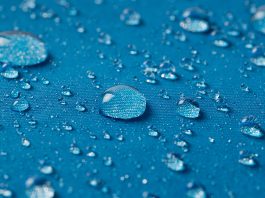Scientists at UC Riverside and Clarkson University have created a new strategy to clean up PFAS pollution from decades of use of fire suppressant foams at military air bases and commercial airports.
The new method, a combination of UV light treatment, sulphite, and electrochemical oxidation, has demonstrated remarkable efficacy in treating contaminated water.
Putting together UV-based treatment and electrochemical oxidation achieved near-complete destruction of PFAS pollution in various water samples.
Fire suppression foams contain concentrated organic compounds that hinder the breakup of strong fluorine-to-carbon bonds in PFAS compounds.
However, the team’s method breaks up these organics, allowing these reactions to occur at room temperature without the need for high pressure or additional heat to stimulate the reaction.
The method was detailed in the journal Nature Water.
Fire suppression foams are a major source of PFAS pollution
Fire-suppressing foams are a major source of PFAS pollution in groundwater because they have been used for decades to extinguish aviation fuel fires at hundreds of military sites and commercial airports.
Invented by the US Navy in the 1960s, the foams form an aqueous film around flammable liquids, depriving the fire of oxygen and extinguishing it.
These foams were applied to minor fuel spills as precautionary measures to prevent fires.
Because of widespread use, the Department of Defense ordered assessments of 715 military sites across the US for PFAS pollution by the end of last year.
The investigation found that 574 of these sites require cleanups according to federal law.
PFAS cleanups became more urgent last month when the EPA implemented a new rule enforcing water utilities to reduce contamination if certain PFAS compounds’ levels exceeded four parts per trillion.
The new method will help treat contaminated groundwater
The clean-up strategy is well suited for cleansing heavily contaminated water used to flush out tanks, hoses, and other firefighting equipment.
As well as this, it can be used to treat leftover containers of PFAS-containing foams.
The scientists’ method can help water utilities deal with groundwater pollution. Contaminated groundwater is usually treated through ion exchange technologies, in which the PFAS molecules glob onto resin beads in large treatment tanks.
The UV light and electrochemical oxidation method can assist in the regeneration of beads so they can be recycled.
The research was supported by funding from the U.S. Department of Defense’s Strategic Environmental Research and Development Program.









